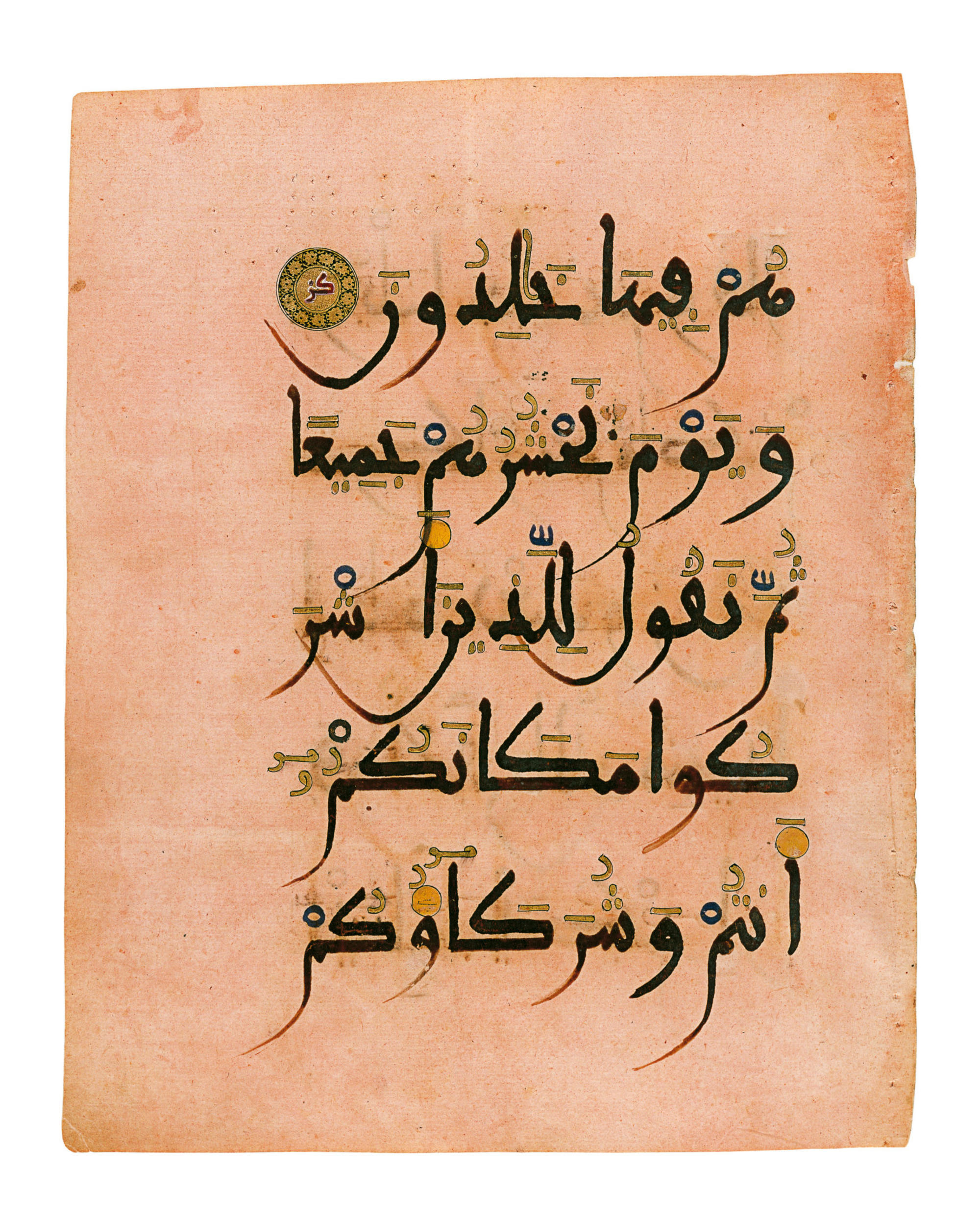Click on the image to zoom
Qur'an folio
- Accession Number:AKM258
- Place:Valencia, Spain
- Dimensions:32.6 x 25.6 cm
- Date:about 1200
- Materials and Technique:Opaque watercolour, gold, ink, paper
In the western Islamic world a distinct round style of script with generous, sweeping curves of descending letters had developed by the mid-10th century (Déroche 1999, pp. 239-41; Blair 2006, p. 223). Known as maghribi, this script was employed in Al-Andalus and the Maghrib, modern-day Morocco, Algeria and Tunisia. Maghribi-script Qur’ans are usually written in brown or black ink with elaborate illumination in gold. Some, like this one, are on tinted peach-pink paper believed to have been produced in Jativa, site of the earliest documented paper mill in Spain (Fraser and Kwiatkowski 2006, p. 64). The systems used for vocalization, pointing and orthography are also peculiar to maghribi script. This Qur’an folio is an elegant example of how the script had evolved by the early 13th century.
References
François Déroche, ‘Tradition et innovation dans la pratique de récriture au Maghreb pendant les IV/Xe siècles’, S. Lancel (ed.), Afrique du Nord antique et médiévale: numismatique, langues, écritures et arts du livre, spécificité des arts figurés (Actes du VIIe colloque internationale sur l’histoire et l’archaéologie de l’Afrique du Nord): 233–247. Paris, 1999. ISBN: 9782735504367
Sheila Blair, Islamic Calligraphy. Edinburgh, 2006. ISBN: 9780748635405
Marcus Fraser and Will Kwiatkowski, Ink and Gold: Islamic Calligraphy. Berlin and London, 2006. ISBN: 9780954901486
Note: This online resource is reviewed and updated on an ongoing basis. We are committed to improving this information and will revise and update knowledge about this object as it becomes available.


